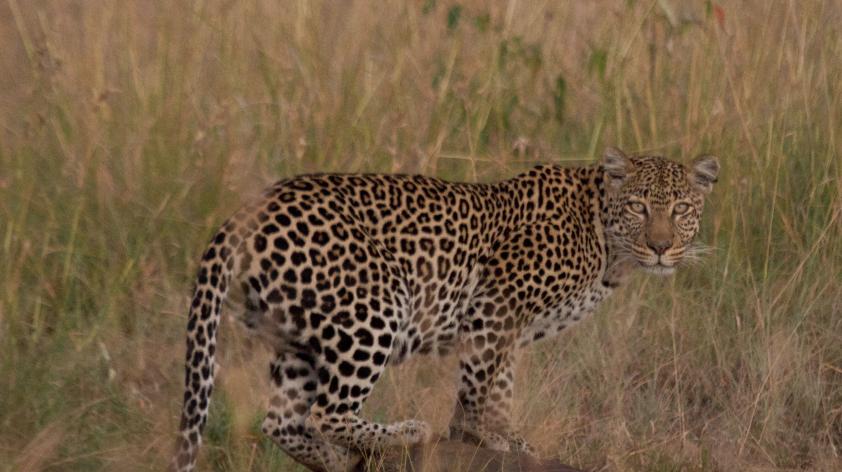
Luring wild, camera-shy leopards into getting their photo taken
Leopards can be one of the most challenging animals to track in the wild. Elusive and shy, leopards are masters of disguise, often seamlessly blending into the background. Of the Big 5, it is the one that most visitors to Africa never see.
However, for their conservation, it is vital that we determine how many leopards exist in the wild, and in many areas this information is missing. So, what is the best way to count leopards?
That is one of the questions we are trying to answer in a new conservation initiative on Loisaba Conservancy in central Kenya. We are using remote cameras to photograph leopards, and their unique coat patterns allow us to distinguish individuals.
But it is not as easy as just setting a bunch of cameras in the wild and hoping for the best. Researchers will often set cameras out in regularly spaced grids, with the idea of getting a sample of the animals that occupy the habitat. However, camera grids aimed at snapping pictures of secretive animals like leopards can suffer from low detection rates, and it can take many cameras operating for many days to get a sense of abundance. This can slow the time required to get an accurate population estimate and increase the workload of sorting thousands of images to find the few images of leopards.
This year in Kenya, we are taking a different tact: luring leopards into getting their picture taken. To understand what may attract a leopard to our cameras, we turned to our resident leopard experts here at San Diego Zoo, Gaylene Thomas and Todd Speis. They told us: Successful scent attractants for leopards include a variety of herbs - except catnip, ironically! Scents such as wintergreen, cinnamon, and colognes such as CK Obsession for Men also do well.
So given that advice, we headed to Kenya armed with colognes and essential oils – not the usual items one has for fieldwork. We are currently testing which scent lures work the best to bring leopards out from hiding and have them linger long enough to get good images of coat patterns.
The initial results are promising, as our cameras are picking up leopards, and coat patterns are already starting to yield results. For example, one of the tour guides on Loisaba Conservancy took several pictures of a male leopard making a stunning daylight kill. When we began to examine the first sets of images from our cameras, we noticed an exact match in coat pattern on the left flank.
Not only will coat pattern recognition allow us to track leopards across space and time, it also provides the opportunity for citizen science. With the high powered cameras that many tourists carry, we are now initiating a sharing platform for tourist leopard photos on Loisaba Conservancy, so that we can maximize our detection of these elusive predators.













